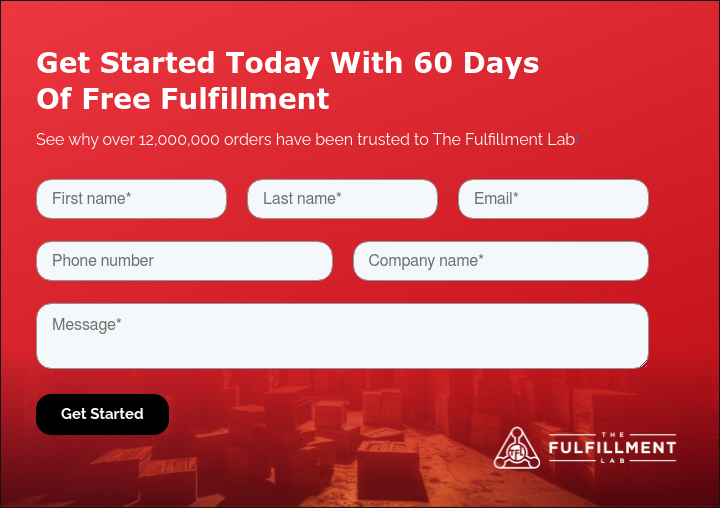5 Popular Ecommerce Revenue Models That Grow Businesses
The ultimate goal of any business is, of course, to make money. While most companies do care about their customers and an increasing number of them prioritize giving back to their communities, without a sustainable revenue model, it simply cannot succeed. This is especially true for online businesses when selecting an ecommerce revenue model that’s best for them.
As Rick Nelson, CEO of The Fulfillment Lab, says, “eCommerce entrepreneurs have a number of revenue model options available to them. However, it’s critical to select the ones that are sustainable for your business and align with customer expectations.”
In this blog, we’ll look at various ecommerce revenue models, provide tips for choosing your best option, and more.
What is a Revenue Model?
A revenue model is the means by which a business plans to make money. Depending on the revenue model, which can be pretty standard or fairly complex, a company may take into consideration manufacturing, purchasing, distribution, fulfillment marketing, and other costs, until the business arrives at a profit.
The revenue model is considered a high-level look at the revenue structure of a business. Within this model, a company can have a number of different revenue streams, i.e. different sources of income.
What is the Difference Between a Revenue Model and a Business Model?
Before delving into revenue models, let’s take a look at business models and how they are different from a revenue model. Business and revenue models are both essential to a well-structured business plan or strategy, but they are not the same.
A business model establishes how a business generates value for its clients, customers, and users. This includes the service or product being sold, value propositions, service expectations and more.
Examples of some common business models include:
- B2C (business to consumer company, i.e. a company selling directly to the general public)
- B2B (business to business company, such as a parts supplier selling to a manufacturer)
- C2C (consumer to consumer company, such as eBay's peer-to-peer online auctions)
- C2B (consumer to business, such as a freelance writer or photographer selling their services to companies).
A revenue model, on the other hand, outlines how a business will generate revenue from the services and products it provides. It focuses on how to generate income, rather than overall value. For those that wonder, how do ecommerce sites make money, the answer is they have a solid, sustainable revenue model.
eCommerce Business Models: New Options and Strategies
eCommerce generates a substantial amount of revenue. In 2023, retail revenue tipped the $6 trillion mark – and that number is expected to be higher in 2024 and beyond. With so much money changing hands, it’s not surprising that business and revenue models have expanded and are enabling businesses to capitalize their ecommerce potential.
To understand the new business landscape, let’s take a look at five of the most common ecommerce business models.
1. Manufacturer
A manufacturer creates its own product using raw materials or assembles pre-made components in order to create a product. eCommerce manufacturers may sell their products directly to consumers or outsource their sales to a distributor.
Some manufacturers also offer private labeling. They may specialize in a product that a retailer wants to sell but doesn’t want to manufacture themselves. So, they purchase the products from a manufacturer and put their label on them. The Great Value brand at Walmart is one example of private labeling. (Manufacturers are also known to use kitting services in their warehouses.)
2. Distributor
A distributor purchases products directly from a manufacturer and sells them to a wholesaler. A distributor will handle passively received orders and actively promote the products to find new buyers, acting as a sales representative for the manufacturer.
3. Wholesaler
Wholesalers work closely with ecommerce retailers to accommodate their needs, often buying products in bulk at a discount from manufacturers or distributors. A wholesaler’s sole responsibility is to fulfill retail orders to the best of their ability.
Today, dropshipping is a popular form of wholesaling. eCommerce retailers will sell a product and pass the sales order to a third-party supplier, or dropshipping company, that then fulfills the order, shipping it to the customer.
4. Retailer
A retailer purchases products from a distributor or wholesaler, and sells those products to the general public. Some ecommerce retailers are also manufacturers, producing and selling their own products.
White labeling is another way retailers may sell products. They simply purchase generic items from a manufacturer and brand them. The Dollar Shave Club is a good example; they bought basic razors from a manufacturer, slapped their name on them, and then used an innovative (at the time) subscription model (more on that in the next section).
5. Franchise
In the franchise business model, an ecommerce entrepreneur pays for the right to sell a product or service under the franchise's name. A franchisee adopts the business model of a particular franchise, meaning they can be a manufacturer, distributor, wholesaler, or retailer!
|
Other articles we think you’ll like: |
7 eCommerce Revenue Models That Work
eCommerce revenue models are proving to be highly successful. Below are some of the most popular options.
1. Sales Revenue Model
The most common of all ecommerce revenue models, here profits are achieved by selling products or providing services online versus, or in addition to, brick-and-mortar stores.
Any business selling items through the internet, regardless of their business model, is following the sales revenue model. While they may have other revenue streams, this tends to be their bread-and-butter.
2. Advertising Revenue Model
Is Bob’s Bait & Tackle ever going to get the type of traffic as, say, Facebook or Google? Of course not. But they can advertise on those sites.
The advertising revenue model is when popular platforms allow others to advertise with them for a fee. Media sites, such as magazines, newspapers, and TV channels, also frequently use this model. While they may charge a flat fee for advertising, generally the cost is based on pay-per-click (PPC), which is the number of people who click on the ad.
Subscription Revenue Model
When it comes to the subscription revenue model, a lot of people think of Netflix or Spotify. However, there are also many popular subscription box brands like Bark Box, Hello Fresh, Ipsy, and Harry’s.
Regardless of the offering, with this model users are charged a recurring fee (monthly or annual) for using services or having existing products replenished and delivered regularly. Today, there are an estimated 7,000 subscription box services operating globally!
4. Transaction Fee Revenue Model
This model charges a fee every time a transaction is made through their platform. For example, eBay charges sellers a fee whenever an item is sold; PayPal charges users a fee for transferring money; eTrade gains a transaction fee whenever a stock is sold; and so on.
While fees tend to be minimal, if people are making thousands of transactions per day, the revenue can be substantial!
5. Affiliate Revenue Model
With this model, businesses earn revenue just by promoting and selling another person’s (or company’s) product on their site (as opposed to the advertising revenue model, which doesn’t allow for purchase on the host’s site).
The concept of affiliate marketing is based on revenue sharing. If a business has a product and wants to earn more, you can promote complementary products or services of another company that will, in turn, pay you for your referrals.
It’s a win-win for both parties; the affiliate gains a new, passive revenue stream, and the merchant gains new customers! Learn more about affiliate marketing here.

6. Agency Revenue Model
The agency revenue model is a method where agencies charge businesses for specialized services like marketing, advertising, or website design. They may bill for each project separately or through regular payments for continuous services. This model allows agencies to offer their expertise in specific areas, helping businesses improve their market presence.
Businesses benefit from this model as it provides access to professional skills without hiring full-time experts. This can be more cost-effective and ensures high-quality, effective marketing or online strategies. Agencies thus become valuable partners for businesses looking to enhance their market standing.
7. Sponsorship Model
The sponsorship revenue model is a strategy where companies promote their brand by partnering with ecommerce websites or services that have a large audience. In this model, companies pay these popular platforms to showcase their brand name. This approach can be a reliable and effective method for increasing brand visibility among a broad audience.
Unlike typical advertising that can be tailored to specific demographics, geographies, or individual users, the sponsorship model often involves broader, non-targeted exposure through large broadcasting channels.
While advertising allows for more customized targeting, sponsorship focuses on gaining widespread recognition by associating with well-known platforms that reach a wide audience.

Developing the Right eCommerce Revenue Model
Which revenue model is right for you? Ultimately, you need to understand your customer and their expectations, assess your current resources to find a realistic revenue model, and identify your budget allocation. And, there are many other types of revenue streams to consider within these five models (check out 101 of them here).
Of course, while competition is fierce in the online world, there has never been a better time to get in on the action. According to TechCrunch, COVID-19 accelerated the shift to ecommerce immensely, boosting revenue growth in ecommerce and making it the number one shopping choice of customers everywhere.
Remember, regardless of the revenue model (or models) you select, an ecommerce business that sells goods must have exceptional shipping and fulfillment processes.
Often, the only interaction an ecommerce business has with their customer is when their package arrives – making timely deliveries and personalized packaging critical for customer engagement and satisfaction.
To learn more about how to optimize your shipping and fulfillment processes to impress your customers, contact the experts at The Fulfillment Lab.




